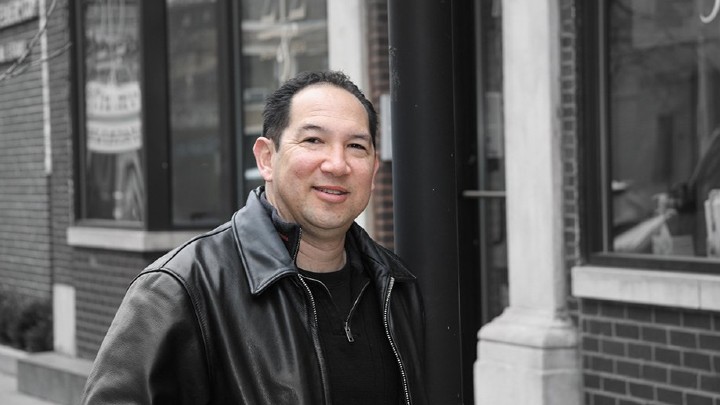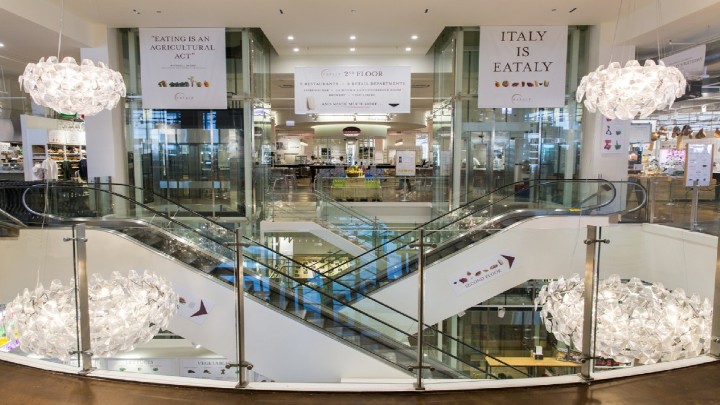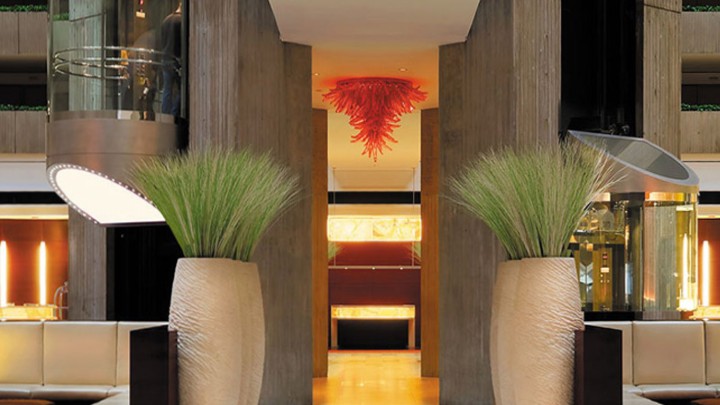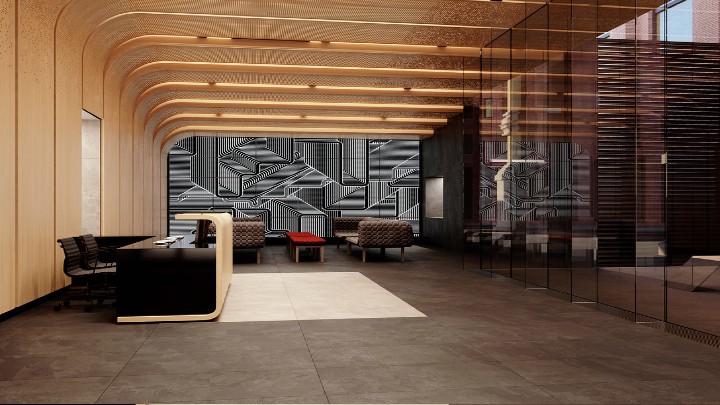
What makes light magical to you?
I love the idea of magic and creating worlds. When I was a kid and everyone wanted to be cowboys and indians or police officers, I wanted to be a sorcerer. I was really into Dungeons and Dragons. [laughs] When I started getting involved with lighting sets, I thought it was really cool, and at some point, I realized that it was like magic. The concept of making someone like or not like a space, or gravitate towards one side of the room, or enter a store; these aren’t absolutes, but I can certainly influence them. It’s not measurable, it’s intangible; and you’re affecting people subconsciously. That’s the magic. And now, with all of these versatile lighting tools, technologies and controls, it’s like having a total spellbook instead of a few pages of spells. I can make all sorts of magic now.

How do you use or apply what you’ve learned in theater and psychology to lighting?
I refer to theater a lot. For example, one key theater rule was to have one or two special effects, and let everything else support that. Not everything has to be a ‘wow’. I use that same logic on a project, and encourage my clients to prioritize all the elements they want to play up so we can layer accordingly. Also, it’s important to understand the human psyche or motivation when we talk about how clients want people to feel in a space. We use the term “feel” a lot here. We don’t use “look” as often as one might think. When we ask a new client that question, we sometimes get a “deer in the headlights” look in response. There are a lot of ways to light a space, but the real take-away is how someone feels when they’re in that space. That’s what I’m trying to get to. One thing that bugs me is the depersonalization of lighting, when lighting design or lighting in general is reduced to a numerical metric. Many spaces are lit without a lighting designer involved, and let’s be honest, designers aren’t the only ones who can create a good environment. Lots of people who aren’t designers can put together a decent lighting scenario. Depersonalization comes into play when the lighting is technically correct in the space, but it tends to be sterile and flat. The right light levels are there, but it lacks warmth, feeling and personality.

What does “depersonalization of lighting” mean to the person in that space, and how does that affect them?
That’s an interesting question. Going back to psychology, one of the exercises we use with clients, and with ourselves, is to ask, “What if the project was a person? What or whom would it be? Are we designing a businessman? An entertainer? An athlete?” We create a personalized profile, and that helps us to think about how the space is different and how we can accommodate it. Sometimes it requires leaving the cookie cutter comfort zone, but the end result influences how someone feels in the space. As I said before, it’s a feeling not a noticeable look. Good lighting is for people. Joe Public doesn’t know light levels or energy use; he just knows how he feels in the space.
How are newer things like tunable white, power over Ethernet (PoE), indoor positioning impacting your designs? Are you using them?
We are keeping an eye on them. What we’re looking at the most is tunable white. It’s never been mandated on a job so far, but we’ve proposed it on a few. One client had major administrative offices below ground with no access to windows. We brought tunable white to the table insofar as benefiting well-being and mood and overall intangibles, but I wasn’t going to pretend to push any physiological advantages. They really liked the idea of tunable white, but couldn’t afford it, so we ended up implementing a workaround. Part of it is waiting for these new technologies to be fleshed out a bit more, and part of it is clients weighing the value in relationship to the cost. Very few jobs shoot for LEED Platinum or the penultimate type of accrediting. On the day-to-day projects we work on, clients like the concept of a new technology like tunable white or PoE, and immediately ask, “How much more is that? Does this mean more controls? How much more does that then cost?” It gets reduced to a monetary element although it may impact circadian rhythms or something else. They have to find the way to assign that value before they’re willing to spend money on it, and it’s hard for me to convince them of it. If there were tangible metrics, like reducing employee absenteeism by ‘X’ or increasing productivity by ‘Y’, and ‘X+Y’ means an increase of ‘Z’ to their profit, they’d be all over that. Until then, they have to find value that’s meaningful to them.

What other trends are you seeing in lighting design?
Circadian rhythm conversations are increasing, and not just in lighting; architectural people are talking about it, too. Anything having to do with biology. You’re hearing more about how behavioral affectations occur. We’re running into the realm now of not just lighting spaces and changing people’s awareness of the space, but how we potentially physiologically affect people. That’s one of the biggest trends I see right now; going from indirect effect to direct effect. Lighting has an incredible potential power insofar as what it can do, but people and their egos can get caught up in that power. Like Uncle Ben told Peter Parker as Spiderman, “With great power comes great responsibility.” Within the design community, that’s something that we need to perhaps remind ourselves of every morning.
How critical are LED controls in terms of what you’re designing?
On a scale of one to ten, the critical nature of controls is high up there, probably seven or eight. I’m not an engineer, so I’m not going to give it a ten [laughs]. It’s an undeniable reality, though. It’s often mandated to comply with the new energy codes, so there’s no choice in the matter. That’s why I said that an engineer might say it’s a ten, because they’re going to say that you plain, outright must have them. For me, the issue lies with the various protocols. There’s a lot of different types; each with various limitations. When I coordinate the control with the fixtures, I need to know that I can get the effect I want. Also, in some cases, the controls are fairly complex. Just the nature of how they work is complex, and my clients don’t like complex, so I have to translate that complexity in a simple manner. It’s like turning Einstein’s theory of relativity into a ‘Dick and Jane’ book.
I love this profession. I’m extremely fortunate that I wake up every morning and use lighting to fulfill a childhood dream of being a sorcerer and have a good life. I’m fortunate to have met and to know good people, and to have plenty of opportunities for a good laugh. I have zero regrets. I’ll close off by paraphrasing Sinatra, “I’m fortunate to have done it my way.”

November 14, 2023
How lighting technology can help reduce risks to migrating birds